Automatic start manual transmission combines ease of driving with manual control, allowing seamless gear shifts without clutch operation, ideal for smooth city driving and improved fuel efficiency.
What is a Manual Transmission?
A manual transmission, also known as a stick-shift, requires the driver to manually change gears using a clutch pedal and gearshift. This system allows the driver to control the engine’s power delivery and torque, providing better fuel efficiency and driving engagement. The clutch pedal disengages the engine from the wheels, enabling smooth gear transitions. Unlike automatic transmissions, manual systems rely on the driver’s skill and coordination to operate effectively, making them popular among driving enthusiasts for their precision and control.
Why Learn to Start a Manual Car?
Mastering a manual transmission enhances driving control and connection to the vehicle. It improves fuel efficiency, reduces repair costs, and allows driving a wider range of cars. Learning to start and shift gears boosts confidence and driving skills, making you a more versatile driver. Plus, manual cars often have better performance and lower ownership expenses compared to automatics, making the effort to learn well worth it for many enthusiasts and practical drivers alike.
Key Components of a Manual Transmission
The clutch pedal, gearbox, and drivetrain are essential components. The clutch engages/disengages engine power, while the gearbox and drivetrain transmit power to the wheels for smooth acceleration.
The Clutch Pedal: Its Role and Function
The clutch pedal is a critical component in manual transmissions, allowing drivers to disconnect engine power from the wheels. Pressing it fully disengages the engine, enabling smooth gear shifts without causing the car to stall. Proper use requires coordinating the clutch with the accelerator to avoid jerky movements. In automatic start manual transmissions, the clutch operates similarly, ensuring seamless control during starts and gear changes, making it essential for efficient and smooth driving experiences.
Understanding the Gearbox and Drivetrain
The gearbox, or transmission, is a mechanical system that transmits engine power to the wheels through a series of gears. In manual transmissions, the gearbox uses synchronized mesh to engage gears smoothly. The drivetrain includes components like the driveshaft and differential, which distribute power to the wheels. Understanding how the gearbox and drivetrain work together is essential for controlling speed and torque, ensuring efficient power delivery and smooth acceleration in automatic start manual transmissions.
Basic Steps to Start a Manual Car
Move the gear shift to neutral and engage the handbrake. 2. Press the clutch fully and turn the ignition key. 3. Shift into first gear and release the clutch slowly while accelerating gently.
Preparation: Neutral Gear and Handbrake
Starting a manual car begins with proper preparation. Ensure the vehicle is on level ground to prevent rolling. Move the gear shift to neutral gear to disengage the transmission. Engage the handbrake firmly to secure the car in place. With the clutch pedal fully pressed, turn the ignition key to the “ON” position. This preparation ensures safety and control before starting the engine and beginning to drive.
Starting the Engine: Ignition and Clutch
With the car in neutral and the handbrake engaged, insert and turn the ignition key to start the engine. Ensure the clutch pedal is fully depressed to disengage the engine from the transmission. This prevents the car from moving unexpectedly when starting. Once the engine roars to life, maintain the clutch in the down position until you are ready to shift into first gear, ensuring a smooth and controlled start to your journey.
Shifting into First Gear
Shifting into first gear is a smooth process after starting the engine. Press the clutch pedal down fully, move the gearshift into first gear, and slowly release the clutch while lightly pressing the accelerator. This ensures a smooth transition from a standstill. Avoid sudden movements to prevent stalling. Once in first gear, the car will begin to move forward gradually, providing a controlled start to your journey.
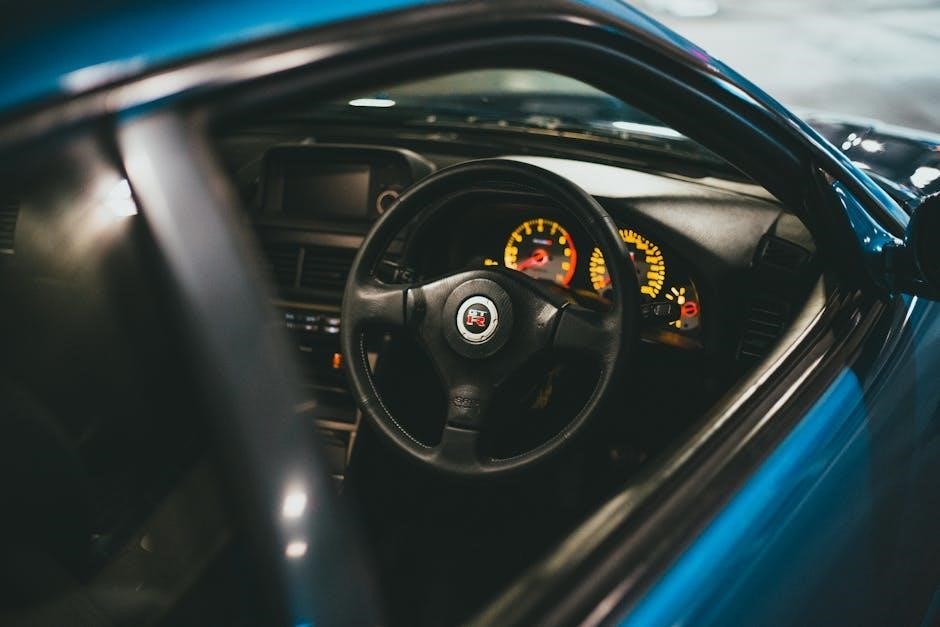
Safety Tips for Starting a Manual Car
Always ensure the car is on level ground and apply the parking brake to prevent rolling. This ensures safety while starting and minimizes the risk of accidents.
Importance of Level Ground
Starting a manual car on level ground is essential for safety and control. Sloped surfaces can cause unintended movement, risking accidents. On level ground, the car remains stable, allowing smoother gear engagement and reducing the likelihood of stalling. It ensures proper engine-to-wheel connection, giving drivers better control and confidence during startup.
Using the Parking Brake Correctly
The parking brake is essential for safety when starting a manual car. Always engage it before starting the engine to prevent the car from rolling. On level ground, it ensures stability, while on inclines, it keeps the car stationary. Proper use avoids accidental movement and potential damage. For push-starting, release the parking brake only when ready to move. This practice enhances control and safety, especially in manual transmissions, where precise startups are crucial.
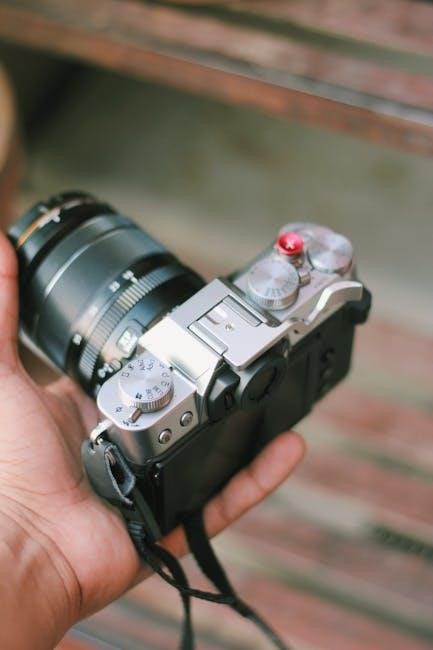
Advanced Techniques for Starting a Manual Car
Mastering push-starting and feathering the clutch enhances control. These methods ensure smooth starts, especially in challenging conditions, and prevent stalling by optimizing gear engagement and throttle coordination.
Push-Starting a Manual Car
Push-starting a manual car is an effective method when the battery is dead. Ensure the vehicle is in second gear and the key is in the “on” position. Press the clutch and brake pedals, release the parking brake, and have others push the car. Once reaching 5 mph, abruptly release the clutch to engage the engine, allowing it to start. This technique requires coordination but is a reliable solution in emergencies.
How to Avoid Stalling
To avoid stalling, release the clutch pedal smoothly while pressing the accelerator gently. Ensure the car is in the correct gear for the speed and incline. Avoid sudden movements and ride the clutch excessively, as this can wear it out. Practice in a safe, flat area to build muscle memory and coordination between the clutch and accelerator pedals.
Troubleshooting Common Issues
Identify issues like dead batteries by checking for clicking sounds or slow engine turnover. Diagnose ignition or fuel system problems if the car won’t start despite a charged battery.
Diagnosing a Dead Battery
A dead battery is often indicated by a clicking noise from the starter or slow engine turnover. Check if dashboard lights illuminate—dim or no lights suggest a dead battery. If the starter clicks but the engine doesn’t turn over, the battery has some power but not enough to start the engine. A completely dead battery will result in no response when turning the key. Always test the battery first before exploring other potential issues with the ignition or fuel system.
What to Do If the Car Won’t Start
If your car won’t start, begin by checking the battery for power. A dead battery is a common issue—look for dim lights or slow cranking. If the battery is dead, jump-starting may resolve the problem. Ensure the transmission is in neutral or park. If the issue persists, inspect the fuel level, ignition system, or alternator. A faulty fuel pump or spark plugs could also prevent starting. Always consult a professional if the problem isn’t resolved with basic troubleshooting.
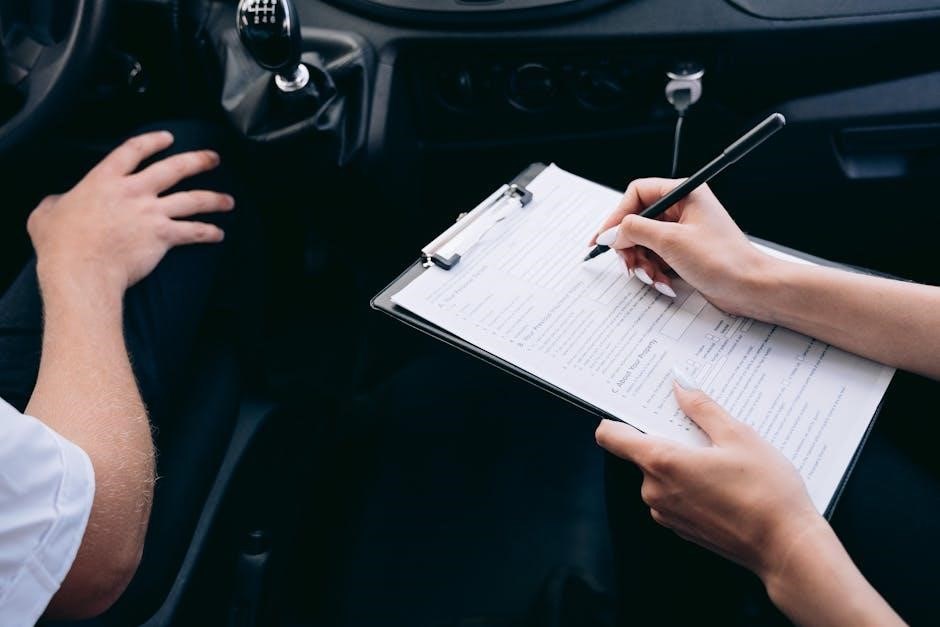
Understanding the Clutch and Its Operation
How the Clutch Engages and Disengages
The clutch engages by slowly releasing the pedal, allowing the engine to connect with the transmission. Disengaging occurs when the pedal is pressed fully, separating the engine from the wheels, enabling smooth gear shifts without stalling. Proper coordination between the clutch and accelerator ensures seamless operation. Riding the clutch excessively can wear it down, so it’s important to use it judiciously for optimal performance and longevity of the clutch mechanism.
The clutch engages by pressing the pedal fully down, disconnecting the engine from the wheels, and disengages by slowly releasing it, reconnecting the engine. Proper coordination ensures smooth gear shifts without stalling. The “biting point” is felt as the clutch begins to engage, signaling connection. Avoid “riding the clutch” to prevent wear. Feathering the clutch helps in stop-and-go traffic, while quick shifts are best for acceleration. Balanced use extends clutch lifespan and enhances driving efficiency.
Riding the Clutch vs. Feathering
Riding the clutch, keeping it partially pressed, wears it down quickly and reduces vehicle control. Feathering involves light, nuanced pedal pressure, used in stop-and-go traffic to prevent stalling. Feathering is better for maintaining control and extending clutch life, while riding the clutch is discouraged as it leads to increased maintenance costs and potential failure. Proper technique ensures smoother driving and longevity of the clutch system.

Driving in Different Conditions
Automatic start manual transmissions excel in various driving conditions, offering smooth acceleration in stop-and-go traffic and steady control on inclines, ensuring optimal performance in diverse environments.
Starting on an Incline
Starting on an incline with an automatic start manual transmission requires careful coordination. Ensure the parking brake is engaged and the surroundings are clear. Shift into first gear, release the brake slowly, and feather the clutch while pressing the accelerator to maintain control. Avoid sudden movements to prevent rolling backward. Use the correct gear for the incline’s steepness to ensure smooth acceleration and maintain traction. This technique enhances safety and stability when driving uphill.
Driving in Stop-and-Go Traffic
Driving in stop-and-go traffic with an automatic start manual transmission requires smooth acceleration and careful clutch control. Feather the clutch to avoid jerky stops and starts, maintaining a steady pace. Keep a safe distance from the vehicle ahead to allow time for reactions. Use low gears for better control in heavy traffic, and avoid sudden movements that could cause the car to stall. This ensures a smooth and stress-free driving experience in congested conditions.
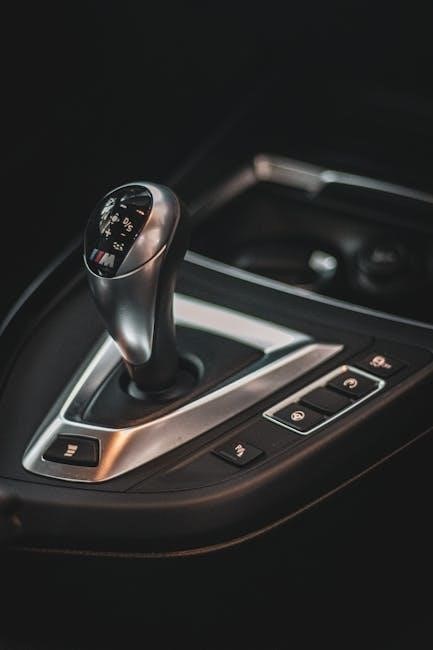
Mastering Shifting Techniques
Mastering shifting techniques involves smooth clutch engagement and timely gear changes, balancing acceleration with control for seamless driving and optimal performance in automatic start manual transmissions.
Upshifting and Downshifting
Upshifting involves moving to higher gears as speed increases, using the clutch smoothly to minimize jerk. Downshifting is essential for slowing down, using lower gears to control speed and avoid braking. Proper timing ensures engine RPMs match gear ratios, preventing abrupt stops or loss of control. Smooth clutch engagement and gradual accelerator release are key for seamless shifts. Practice listening to engine sounds to guide gear changes, enhancing overall driving efficiency and vehicle control.
Using Neutral Gear Properly
Neutral gear disengages the engine from the wheels, allowing the car to roll freely without engine resistance. Always engage neutral when starting the engine or when the car is stationary for an extended period. Proper use of neutral prevents unnecessary wear on the clutch and transmission. It also ensures safety by avoiding accidental movement. Use neutral when rolling to a stop or on inclines to maintain control. This gear is essential for smooth transitions and preventing stalling during push-starts or in stop-and-go traffic conditions.
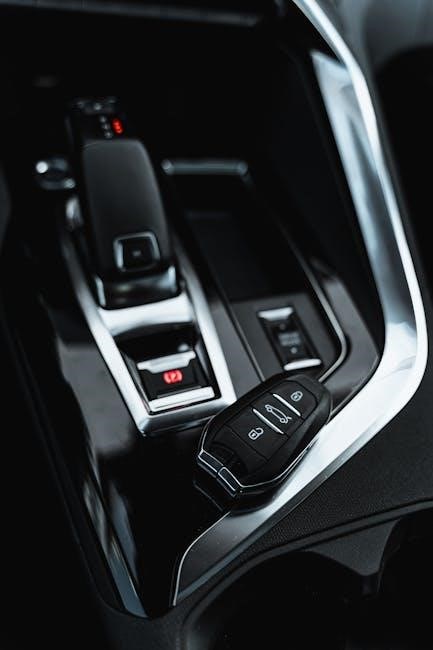
Maintenance Tips for ManualTransmission
Regular servicing ensures optimal performance. Check gearbox fluid levels periodically and inspect components like the clutch and drivetrain for wear; Proper maintenance prevents premature damage and extends lifespan.
Clutch Care and Maintenance
Proper clutch maintenance is essential for smooth gear transitions. Inspect the clutch pedal for smooth operation and ensure it returns fully after use. Check clutch fluid levels regularly and top up as needed to maintain hydraulic system function. Avoid excessive wear by not “riding” the clutch, as this can prematurely wear the clutch plate. Regularly inspect the clutch components for signs of wear, such as spongy pedal feel or difficulty shifting gears. Addressing issues early prevents costly repairs and ensures optimal performance.
Checking Gearbox Fluid Levels
Regularly checking gearbox fluid levels ensures optimal performance and prevents damage. Locate the gearbox dipstick or filler plug, typically found under the car or near the transmission. Wipe it clean with a rag and insert it again to get an accurate reading. The fluid level should be between the minimum and maximum marks. If low, top up with the recommended fluid type, as specified in the owner’s manual. Avoid overfilling, as this can damage seals. Consistent maintenance prolongs gearbox life and prevents costly repairs. Always consult the manual for specific instructions.
Mastering automatic start manual transmission offers a seamless driving experience, combining efficiency with control, making it ideal for both novice and experienced drivers in various conditions.
Final Thoughts on Mastering Manual Start
Mastering the manual start is a valuable skill that enhances driving control and efficiency. While it may require patience and practice, especially in stop-and-go traffic or inclines, the benefits are significant. Consistently engaging the clutch smoothly and timing gear shifts properly ensures a seamless driving experience. Regular maintenance, such as checking gearbox fluid and clutch condition, also plays a key role in optimal performance. With persistence, drivers can overcome challenges like stalling and enjoy the satisfaction of precise control over their vehicle.
